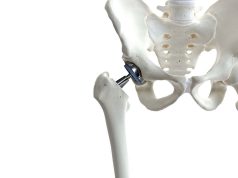Fewer surgical site infections observed with iodine povacrylex as preoperative antisepsis for surgical procedures
By Elana Gotkine HealthDay Reporter
THURSDAY, Feb. 1, 2024 (HealthDay News) — For patients with closed extremity fractures, fewer surgical site infections occur with use of antisepsis with iodine povacrylex in alcohol, according to a study published in the Feb. 1 issue of the New England Journal of Medicine.
Sheila Sprague, Ph.D., from McMaster University in Hamilton, Ontario, Canada, and colleagues conducted a cluster-randomized, crossover trial at 25 hospitals in the United States and Canada to compare use of alcohol solutions containing iodine povacrylex or chlorhexidine gluconate as skin antisepsis before surgery to repair a fractured limb. Hospitals were randomly assigned to use 0.7 percent iodine povacrylex in 74 percent isopropyl alcohol (iodine group) or 2 percent chlorhexidine gluconate in 70 percent isopropyl alcohol (chlorhexidine group) as preoperative antisepsis. The hospitals alternated interventions every two months. The trial included 6,785 patients with a closed fracture and 1,700 with an open fracture.
The researchers found that surgical-site infection occurred in 2.4 and 3.3 percent of patients in the iodine and chlorhexidine groups, respectively, in the closed-fracture population (odds ratio, 0.74; 95 percent confidence interval, 0.55 to 1.00; P = 0.049) and in 6.5 and 7.3 percent, respectively, in the open-fracture population (odds ratio, 0.86; 95 percent confidence interval, 0.58 to 1.27; P = 0.45). The two groups had similar frequencies of unplanned reoperation, one-year outcomes, and serious adverse events.
“The interventions that we compared in this trial are similar in price, availability, and directions for use,” the authors write. “Our findings suggest that the use of iodine povacrylex in alcohol as preoperative skin antisepsis could prevent surgical-site infection in thousands of patients with closed fractures, but such use is unlikely to improve the outcomes in patients with open fractures.”
Editorial (subscription or payment may be required)
Copyright © 2024 HealthDay. All rights reserved.








